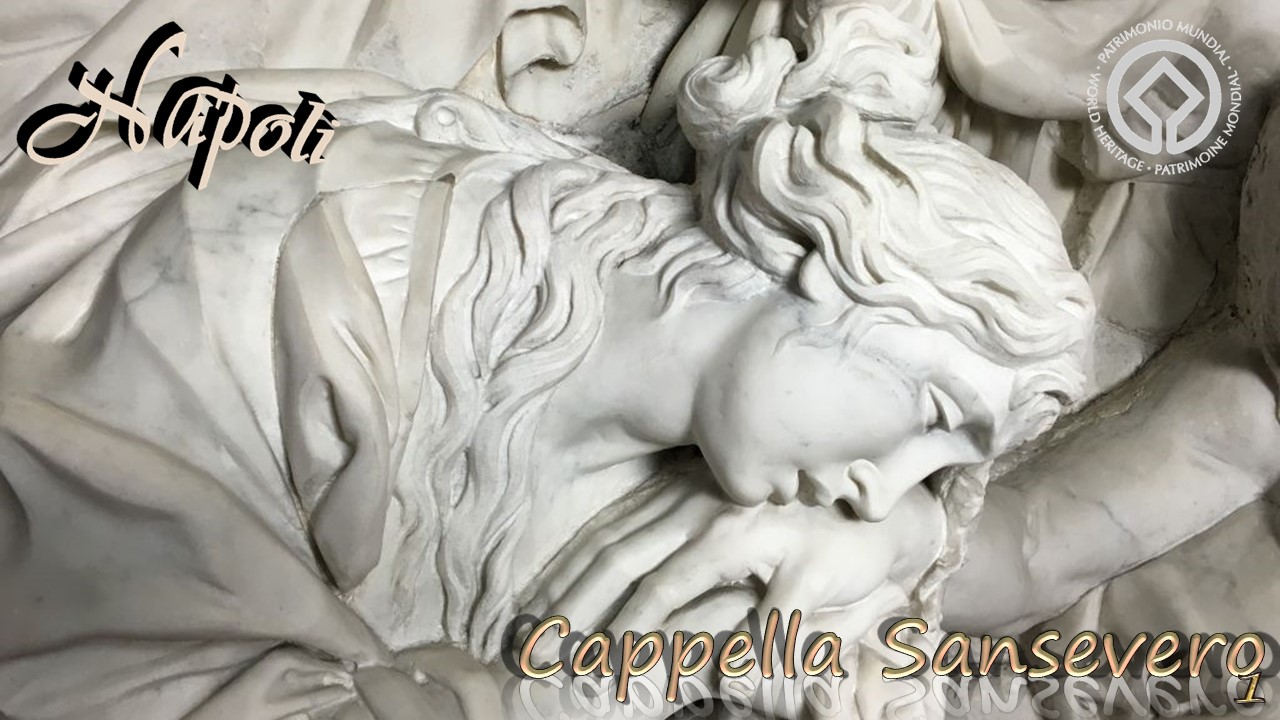Italia Napoli Cappella Sansevero 1 PowerPoint PPT Presentation
Title: Italia Napoli Cappella Sansevero 1
1
Cappella Sansevero
1
2
Duomo
Piazza Dante
San Domenico
Piazza Gesu
Santa Chiara
3
In the late 16th century, the Duke of
Torremaggiore, Giovan Francesco di Sangro, after
being miraculously cured from a serious
illness, erected a chapel, called Cappella
Sansevero de Sangro (also known as Santa Maria
della Pietà or Pietatella, to thank the Virgin
Mary. In the early years of the 17th century,
Alessandro di Sangro, son of Giovan Francesco
began the transformation of the original votive
chapel into a true votive mausoleum, which was
later completed by Prince Raimondo di Sangro.
Thus, between the 1744 and the 1766, what was
originally a small chapel became one of the most
mysterious, extraordinary, and spectacular
settings in Naples, containing statues and
monuments of extraordinary beauty mixed with
mysterious esoteric and masonry symbols. A noble
mausoleum, a temple of initiation, which
admirably reflects the multi-faceted personality
of its ingenious architect, Raimondo di
Sangro, seventh Prince of Sansevero
4
(No Transcript)
5
The High Altar
The high relief, or marble picture, of
the Deposition was carved by Francesco Celebrano
and is considered by critics to be the best work
of Celebrano. It is a unique exemplar in Naples
of a high relief on a high altar, even if the
technique can be found in the city in various
other contexts
6
(No Transcript)
7
(No Transcript)
8
(No Transcript)
9
(No Transcript)
10
(No Transcript)
11
(No Transcript)
12
(No Transcript)
13
(No Transcript)
14
(No Transcript)
15
(No Transcript)
16
(No Transcript)
17
(No Transcript)
18
(No Transcript)
19
(No Transcript)
20
To the sides of the steps to the High Altar are
two Angels by Paolo Persico, in typically baroque
drapery, carved in a marble which seems to come
alive
21
(No Transcript)
22
(No Transcript)
23
Above, framed in a starburst of stucco angels, by
Paolo Persico, is the painting of the Pietà, by
an unknown Neapolitan artist in the late
sixteenth century
24
(No Transcript)
25
(No Transcript)
26
(No Transcript)
27
(No Transcript)
28
The ceiling, known as the Glory of Paradise or
as Di Sangro Paradise, was painted by Francesco
Maria Russo in 1749 and is famous for the
brilliant colors. Russo used of a formulation
invented by Raimondo di Sangro himself, and even
today, after over 250 years, they are still very
intense
29
(No Transcript)
30
(No Transcript)
31
(No Transcript)
32
(No Transcript)
33
(No Transcript)
34
The statue representing Saint Rosalia, her head
circled by her characteristic crown of roses, by
Francesco Queirolo, c. 1756
35
Rosalia was in fact the daughter of Sinibaldo of
the counts dei Marsi and di Sangro. The
twelfth-century Rosalia became patron saint of
Palermo, having saved the city from the plague
which descended in 1624. It was in these
circumstances that her bones, found on Monte
Pellegrino, were transported to Palermo
36
Raimondo di Sangro wanted to commemorate the most
famous saint in the family
37
Saint Oderisio
38
Opposite the Chapel of Saint Rosalia is that of
another important saint of the family, Oderisio,
thirty-ninth abbot of the monastery of
Montecassino, where he was buried in 1105. The
statue of Saint Oderisio was the work
of Francesco Queirolo almost certainly in the
same year as the plaque, i.e. in 1756, most
probably the date of the monument to Saint
Rosalia. While apparently outside the general
allegorical scope of the Chapel, the monuments
dedicated to the two main saints of the household
confirm, however, the Prince of Sanseveros
intention to celebrate his lineage
39
(No Transcript)
40
Saint Oderisio is portrayed kneeling on a cushion
next to which lies his cardinals hat
41
(No Transcript)
42
(No Transcript)
43
(No Transcript)
44
Around the mid-sixties, Francesco Celebrano was
responsible for producing a floor with marble
polychrome inlay, within which there was to be a
continuous line of white marble without
join, prodigious invention of the genius Raimondo
di Sangro. The chapel's original polychrome
marble flooring was badly damaged in a major
collapse involving the chapel and the
neighbouring Palazzo dei di Sangro in 1889.
45
The choice of a labyrinth for flooring makes
perfect sense in the allegorical language
designed by the Prince for the Chapel. The
labyrinth motif, belonging to ancient classical
tradition rich in references to hermetic
knowledge, represents the difficulty of the
pathway which the initiate must follow if he is
to gain knowledge. Labyrinths, found in many
gothic cathedrals and more generally in the
so-called abodes of philosophy, are
the alchemists image of the Great Work
46
The serious collapse, that involved the Palace
and the Sansevero Chapel in 1889, damaged the
original flooring so much that the restorers
shied away from undertaking the complicated
restoration so the Chapel was re-floored in
Neapolitan cotto, and enamelled in yellow and
blue, the colours of the di Sangro arms.
47
Originally built around the end of the 16th
century to house the tombs of the di Sangro
family, the chapel was given its current baroque
fit-out by Prince Raimondo di Sangro, who,
between 1749 and 1766, commissioned the finest
artists to adorn the interior
48
Text pictures Internet All copyrights belong
to their respective owners Presentation
Sanda Foisoreanu
2018
Sound Claudio Monteverdi - Laudate
Dominum in sanctis eius (Rossana Bertini
Philippe Jaroussky)

